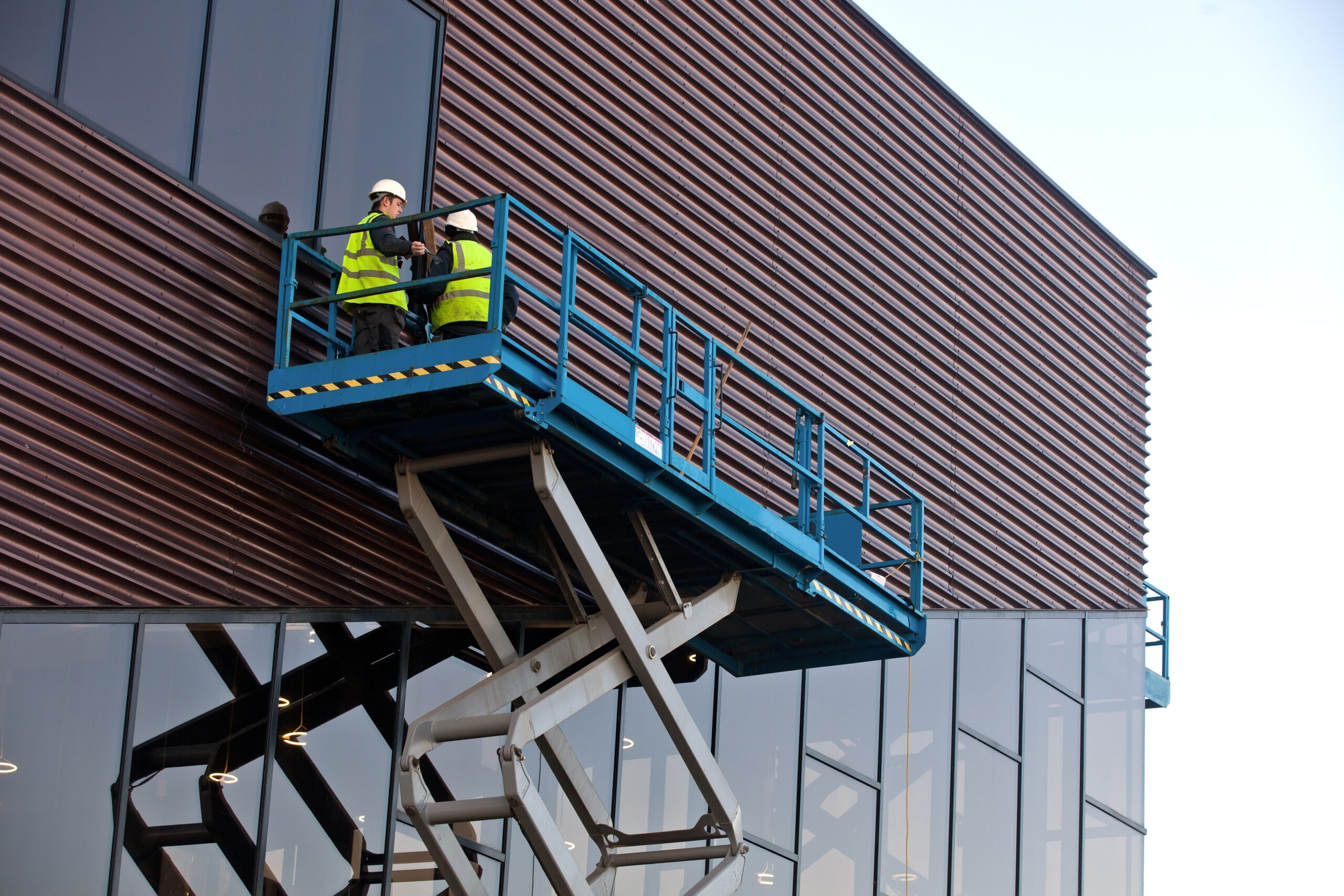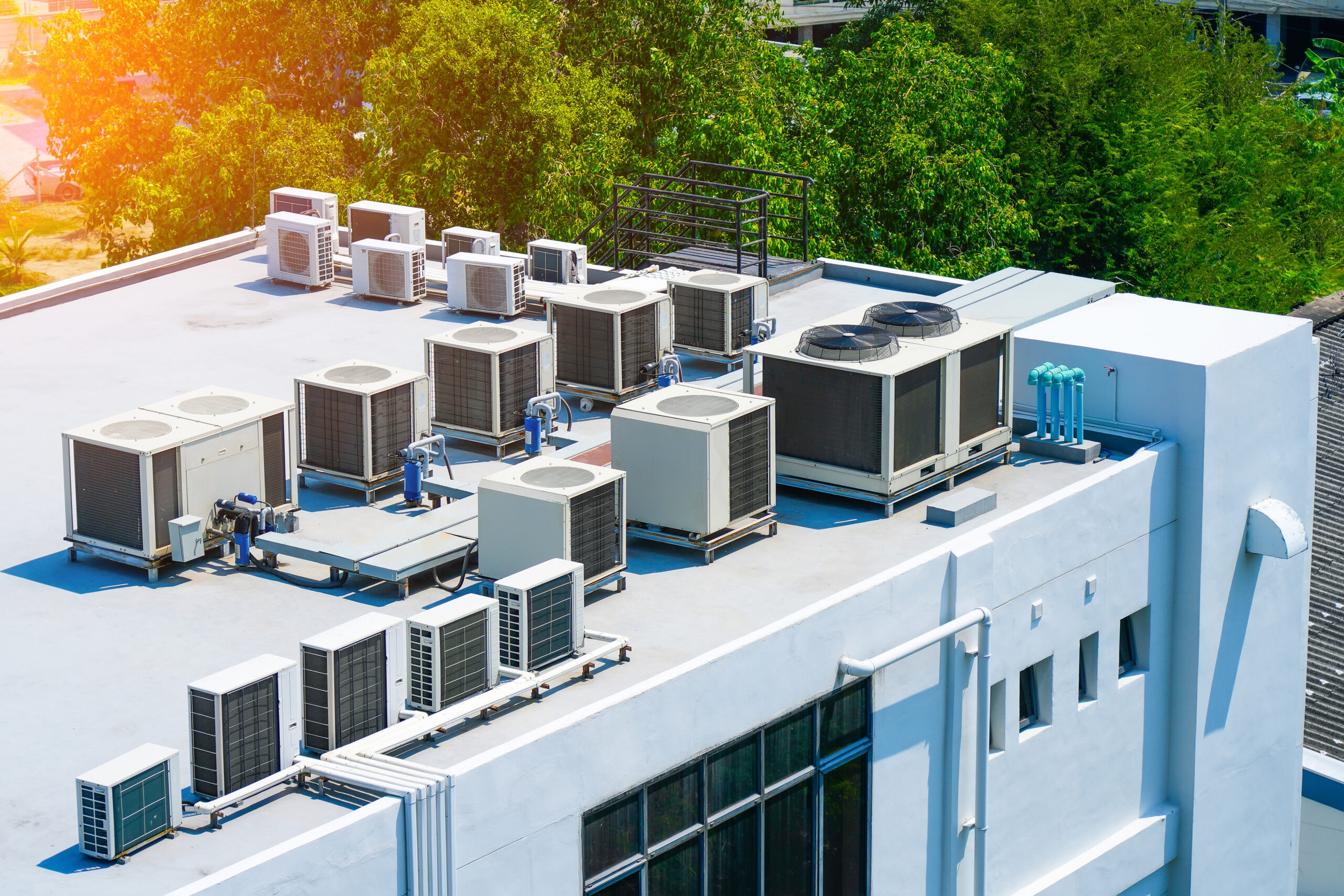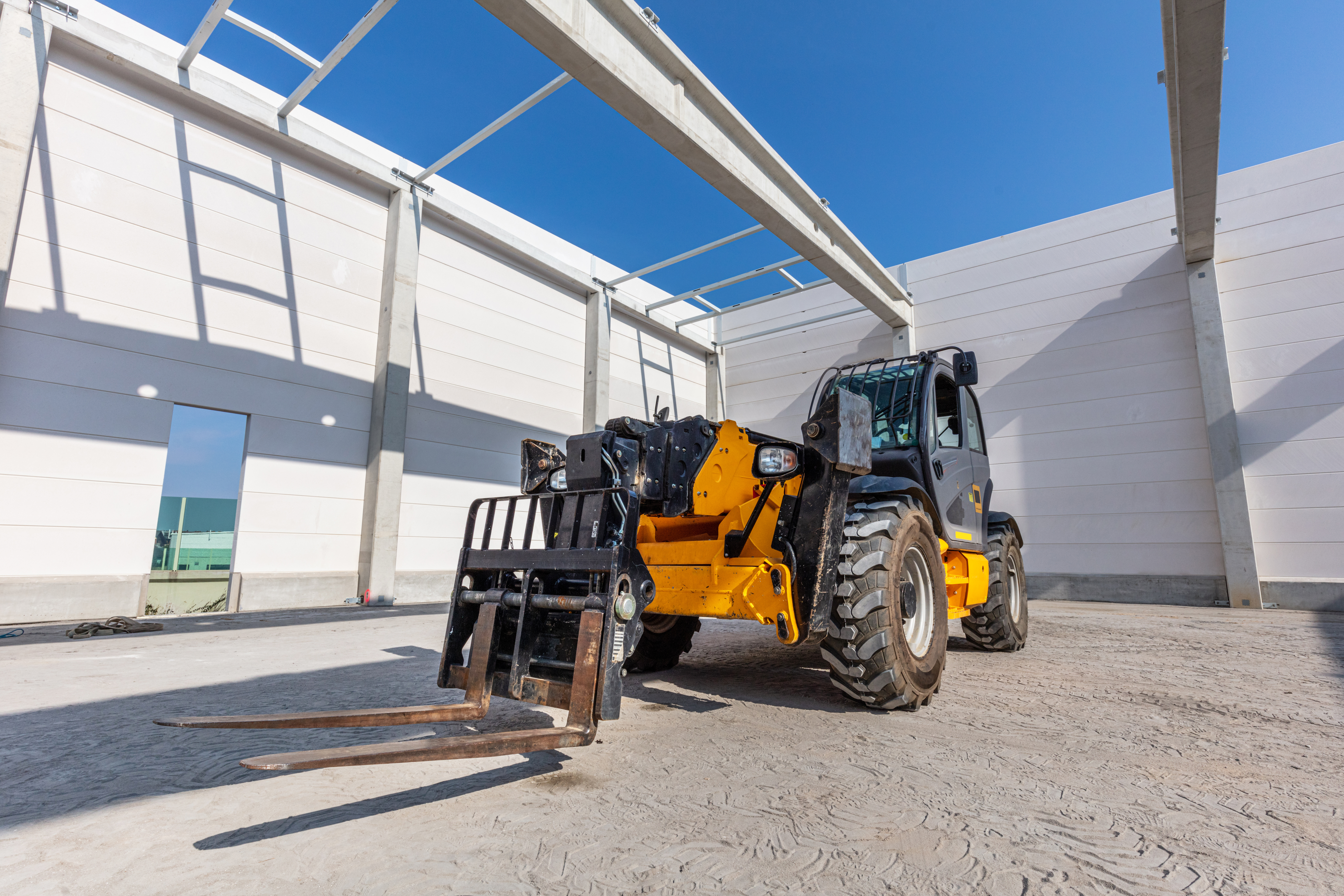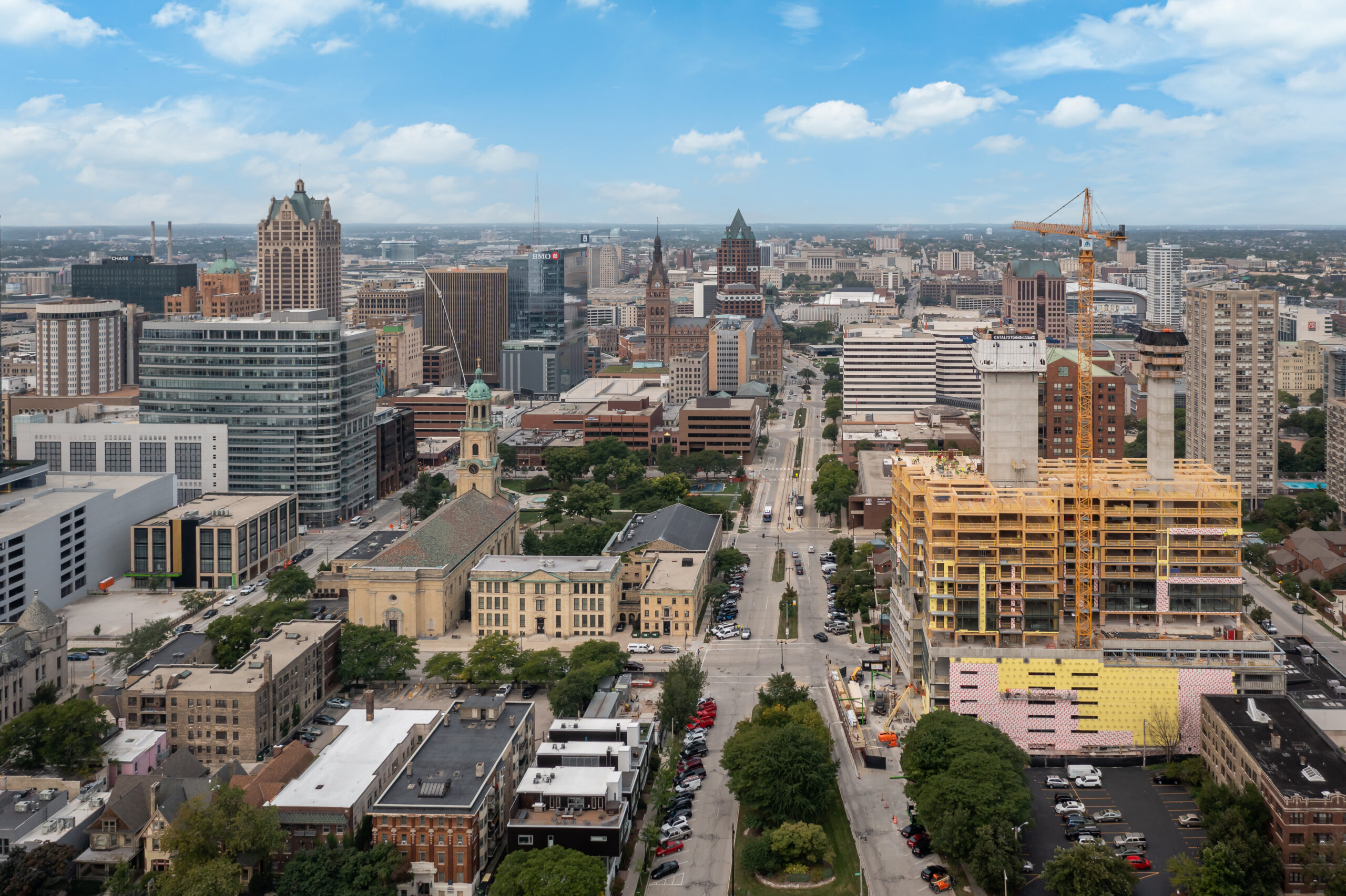
Overview: boom lift vs scissor at a glance
Choosing between a boom lift and a scissor lift can make or break your schedule, budget, and safety plan. If you are weighing boom lift vs scissor for your next project, you want to compare reach, maneuverability, capacity, terrain handling, and cost. This guide explains the practical differences, shares real jobsite examples, and gives you expert tips from American Erecting & Ironworks so you can book with confidence. Whether you are working in Racine, Kenosha, Milwaukee, or nearby Lake County, Illinois, our team can help you select the right equipment and deliver it on time.
What is a boom lift?
A boom lift is an aerial work platform with an extending arm that reaches up and out. The basket carries one or two workers with tools to elevated work. Boom lifts are the go-to choice when you need to reach over obstacles or hit higher elevations that a straight vertical platform cannot handle.
Common types of boom lifts
- Telescopic or straight boom: Provides long, straight horizontal and vertical reach. Best for open sites with higher heights and minimal obstructions.
- Articulating boom: Features joints that bend to snake around obstacles such as ducts, pipes, or building features. Ideal for tight, complex jobsites.
- Trailer-mounted boom: Smaller and towable, good for light maintenance or where a compact footprint is needed.
- Power options: Electric for indoor or low-emission sites, diesel or dual fuel for outdoor and rough terrain conditions.
When American Erecting & Ironworks provides a boom lift, you can request the height class and power type that matches your site conditions. Our equipment rental lineup includes genie boom lifts and related gear for indoor and outdoor work.
What is a scissor lift?
A scissor lift is an aerial platform that moves straight up and down using a crisscross support system. It does not reach out horizontally, but it offers a stable, wide platform that is excellent for tasks needing more workspace and higher capacity.
Common types of scissor lifts
- Electric slab scissor: Compact with non-marking tires, designed for smooth floors in warehouses, factories, and retail spaces.
- Rough terrain scissor: Larger with foam-filled or pneumatic tires, often four-wheel drive, designed for outdoor sites with uneven surfaces.
- Platform sizes and deck extensions: Many scissor lifts include slide-out deck extensions that add workspace for tools and materials.
In many facilities across Southeastern Wisconsin, scissor lifts are the workhorses for maintenance, lighting, and mechanical installations. When you compare boom lift vs scissor, think of scissor lifts as stable work platforms and boom lifts as outreach specialists.
boom lift vs scissor: key differences that matter
Reach and outreach
Boom lifts provide both vertical height and horizontal outreach. If you must work over landscaping, conveyors, parked vehicles, a roof edge, or production lines, a boom lift is usually the answer. Scissor lifts only go up and down, so you must position the base directly under the work area. If your target point is not directly accessible from below, a scissor lift will not solve the problem without moving obstacles or repositioning the base many times.
Maneuverability and footprint
Boom lifts can maneuver around obstacles with articulating joints or a long straight boom. However, they often require more space to rotate and position the base. Scissor lifts generally have a smaller turning radius and a tighter footprint, which is helpful inside aisles, between racks, or around production equipment. For narrow corridors with low ceiling obstructions, an electric scissor lift is often easier to operate.
Capacity and platform workspace
Scissor lifts typically offer higher platform capacity and a larger deck. If your task requires two or more workers, tools, and materials on the platform, a scissor lift is a smart choice. Boom lifts have lower platform capacity but provide access to hard-to-reach areas. For heavy mechanical installs or long runs of ductwork where you need parts at height, scissor lifts stand out.
Terrain and power
For rough or muddy sites, rough terrain scissor lifts and diesel boom lifts both have solutions. If you need to climb a grade and still reach up and out, a boom lift often offers better performance. For indoor work with zero emissions, electric scissor lifts shine. Electric articulating booms can also work indoors, but always confirm weight, tire type, and turning space.
Safety considerations
Both lift types require trained operators, fall protection awareness, and pre-use inspections. Because boom lifts can move the platform outward and rotate the turret, operators must pay close attention to stability, swing radius, and overhead hazards. Scissor lifts feel more stable underfoot but still demand careful positioning, guardrail use, and attention to floor load limits. American Erecting & Ironworks prioritizes safety across every rental and service task, guided by proven procedures and experienced personnel.
Cost to rent and operate
When comparing boom lift vs scissor by cost, scissor lifts are typically less expensive for the same working height. Boom lifts are cost-effective when the job demands outreach and fewer repositionings. The cheapest option is the one that lets your crew finish faster with fewer moves, fewer delays, and minimal rework. American Erecting & Ironworks offers flexible daily, weekly, monthly, and extended rental terms so you can match the contract to the timeline.
Transport and setup
Scissor lifts are compact and often easier to deliver and stage indoors. Boom lifts may require more space to unload and set up. In tight downtown sites or busy facilities, plan for delivery windows and clear paths. Our team coordinates crane services, deliveries, and pickups so your site stays efficient and safe.
Match the lift to the task: real-world scenarios
Exterior building work and tall facades
For façade repairs, exterior painting, window replacement, or signage at height, a boom lift is usually the best choice. You can park away from landscaping or sidewalk traffic and reach over obstacles. An articulating boom is ideal for working up and around architectural features or rooflines.
MEP installs and maintenance indoors
For indoor mechanical, electrical, and plumbing work, a scissor lift gives you the platform space and capacity to carry tools, conduit, cable trays, and small equipment. If piping or ductwork runs above machinery, an electric articulating boom can reach over obstructions. When comparing boom lift vs scissor for indoor MEP, start with scissor for capacity, then switch to boom where outreach is required.
Warehouses and distribution centers
Changing light fixtures, running cable, or maintaining sprinklers in long aisles is often best with electric scissor lifts due to their stability and straightforward up-down motion. For high ceilings with beams or catwalks that block direct access, an articulating boom may be necessary to reach around.
Tree care and site preparation
Tree trimming and outdoor maintenance often call for a boom lift. The ability to reach up and over branches while keeping the base clear of roots or uneven ground is a major advantage.
Steel erection and industrial upgrades
For placing steel beams or columns, crews may use both lift types. A boom lift helps the connector reach a specific point above and beyond the base, while a scissor lift provides a stable platform for staging tools and materials. American Erecting & Ironworks supports these tasks with cranes, forklifts, and telehandlers to keep the workflow smooth.
Cost and scheduling tips for Wisconsin contractors
Control costs by matching the lift to the exact job. If you mostly need vertical access and workspace, a scissor lift often gives you more platform capacity for less rental cost. If you need horizontal reach or many different work points, a boom lift reduces repositioning and saves time. Consider a mixed approach for larger projects: one scissor lift for assembly and prep, and one boom lift for final positioning at height.
- Book early for peak season: Spring and summer demand is high across Racine, Kenosha, and Milwaukee counties.
- Verify access: Measure door widths, aisle widths, and ceiling heights for indoor jobs.
- Confirm floor loads: Especially for mezzanines and older buildings.
- Plan charging or fueling: Indoor electric units may need overnight charging. Outdoor diesel units need a fueling plan.
- Bundle services: American Erecting & Ironworks can pair lifts with forklifts, rigger booms, telehandlers, or crane services for one coordinated schedule.
Safety, training, and compliance
Every aerial lift operator should be trained and familiar with the specific model on site. Pre-use inspections, fall protection policies, and hazard assessments are non-negotiable. Pay attention to wind ratings for outdoor work and keep clear of overhead power lines. On busy jobsites, designate a spotter to help with boom swing and traffic control. American Erecting & Ironworks maintains late-model equipment and follows strict safety procedures, including NCCCO-certified crane operators for lifting support when needed. Our safety-first approach helps protect your crew, your schedule, and your budget.
Why book with American Erecting & Ironworks
American Erecting & Ironworks is a second-generation, family-owned company based in Racine, Wisconsin. Since 1991, our team has served contractors, builders, manufacturers, and facility managers across Racine, Kenosha, and Milwaukee counties, plus parts of Lake County, Illinois. We operate a fleet of late-model cranes, tractor-trailers, forklifts, rough terrain telehandlers, and genie boom lifts, backed by experienced staff and high safety standards.
- Equipment rental: Well-maintained forklifts with or without rigger booms, telehandlers, and boom lifts with flexible daily, weekly, monthly, or extended terms.
- Crane services: Precision lifts for HVAC units, heavy equipment, and building materials, staffed by NCCCO-certified operators.
- Machinery moving: Safe, efficient relocations with minimal downtime. We can schedule around your work, including weekends and holidays.
- Steel sales: Beams and columns in common sizes for projects throughout Wisconsin.
When you need expert guidance on boom lift vs scissor selection, our team can ask the right questions and suggest the best fit for your job. We understand local codes, weather, and site conditions, and we deliver on schedule.
Frequently asked questions
How do I decide between boom lift vs scissor for a mixed indoor-outdoor job?
Use a scissor lift indoors for straight-up tasks with heavier tools or materials. Use a boom lift outdoors where you need reach over landscaping or obstacles. If you must reach over equipment inside, an electric articulating boom may be the right choice, provided aisles and floor loads allow.
What height should I order?
Start with the highest working point and add a safety margin. Working height is usually platform height plus the average reach of a person. For example, a 30-foot working height may require a 24-foot platform height. If in doubt, consult American Erecting & Ironworks to right-size the machine.
Can a scissor lift handle rough terrain?
Yes, rough terrain scissor lifts can work outdoors and on uneven ground. They are still vertical-only platforms, so they cannot reach over obstacles, but they provide solid capacity and a stable deck in outdoor conditions.
Are electric units powerful enough?
Modern electric scissor lifts and articulating booms perform well for indoor and some outdoor tasks. They are quiet, clean, and ideal where emissions or noise are a concern. For heavy-duty outdoor use, diesel or dual-fuel units may be better.
What about transport and access?
Measure doorways, ramps, and turning areas. Confirm that your floors can support the machine weight. American Erecting & Ironworks coordinates delivery and pickup and can advise on the right machine width and tire type for your facility.
Can American Erecting & Ironworks provide operators?
We provide crane operators who are NCCCO certified and can support lifting and rigging needs. For aerial lifts, we help you rent the right model and provide guidance on safe use requirements. If you need turnkey labor support, discuss your scope with our team.
Checklist to choose the right lift
- List work locations and heights, including any horizontal reach needed.
- Map obstacles such as conveyors, mezzanines, equipment, landscaping, and roof edges.
- Confirm indoor or outdoor use, terrain conditions, and emissions requirements.
- Estimate platform capacity needs, including number of workers and tools.
- Measure access points: doors, aisles, turning radii, and floor loads.
- Decide rental term and schedule deliveries around other trades.
- Plan safety: training, fall protection, spotters, and inspection routines.
- Contact American Erecting & Ironworks for model selection and a written quote.
Case examples from the field
Warehouse lighting upgrade
A Racine facility needed to replace high-bay lights across multiple aisles. Electric scissor lifts offered ample platform space for two technicians and fixtures, with quick up-down movements and minimal repositioning. The project finished two days early compared to a boom lift plan because the platform capacity reduced trips to the ground.
Exterior signage install
In Kenosha, a retailer needed new signs mounted over a landscaped entry with parking below. An articulating boom lift allowed the crew to set up away from planters and reach over the entry canopy. The crew avoided removing landscaping and finished in one shift.
Manufacturing line retrofit
A Milwaukee manufacturer had to route new ductwork over a running production line. The boom lift’s ability to reach over conveyors eliminated downtime. A scissor lift staged materials nearby, reducing trips and boosting productivity. This is a perfect example of boom lift vs scissor used together for best results.
Ready to book? Get a fast quote
If you are deciding between boom lift vs scissor for your job, speak with the local experts at American Erecting & Ironworks. We will ask the right questions, recommend the right model, and schedule delivery to match your timeline. We can also support your project with crane services, machinery moving, forklifts with rigger booms, telehandlers, and steel sales, all from one trusted team.
American Erecting & Ironworks
Address: 2108 Clark St, Racine, WI 53403
Phone: (262) 637-7177
Hours: Monday – Friday: 7:00 AM – 4:30 PM
Website: AEAIWI.COM
Book your equipment, keep your crew safe, and finish on schedule. Contact us today to compare boom lift vs scissor options and get a clear, written quote. Our team is ready to help you choose with confidence and get the job done right.





